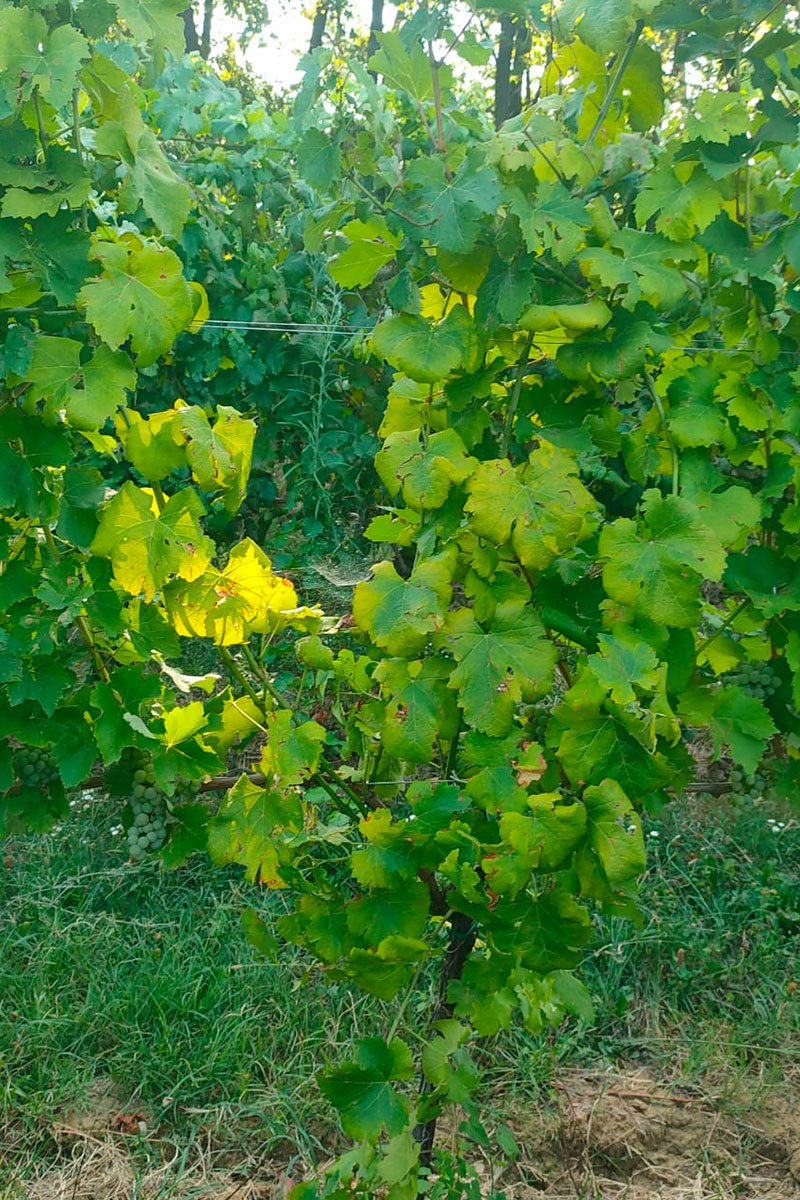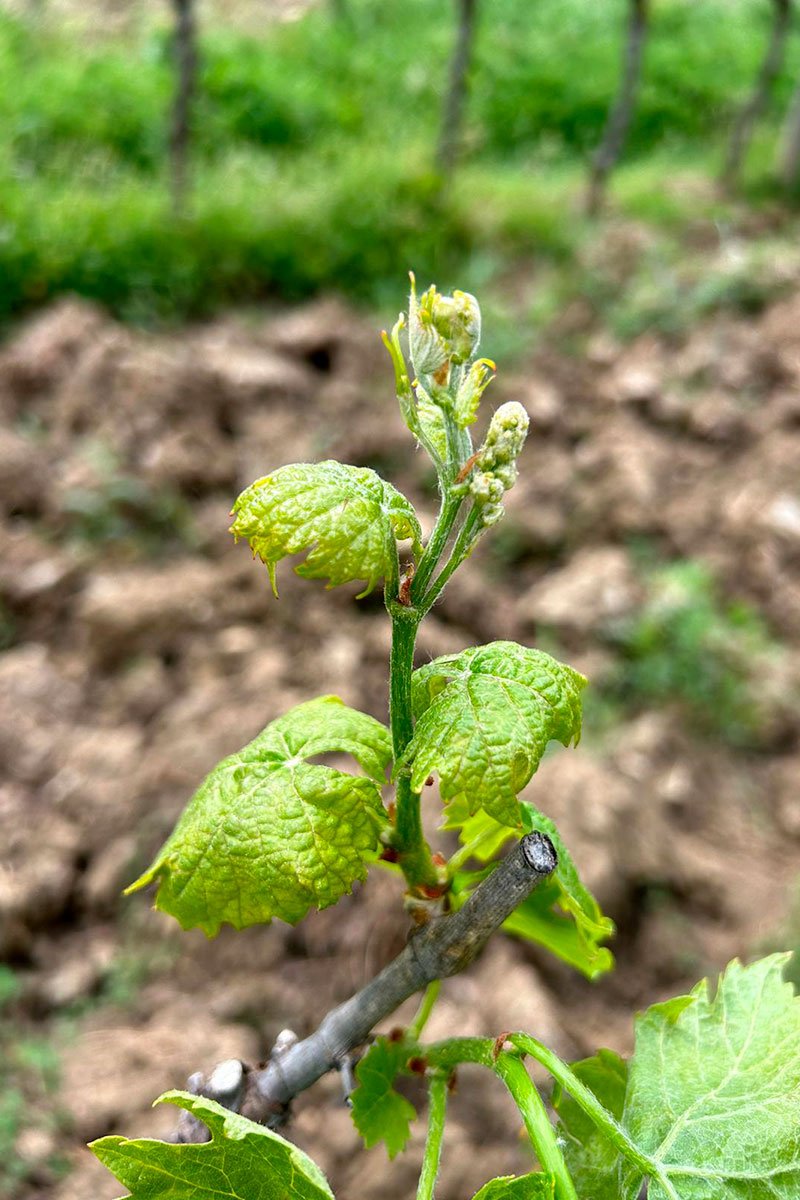June 26, 2023
Grapevine Flavescence Dorée
and its main vector
In the early 1950s, a new infectious disease—Flavescence dorée—spread through the vineyards of southeastern France. It later affected other European countries, including Italy, starting in the second half of the 1960s. Today, it is present throughout Northern and Central Italy (and more recently, in Southern Italy as well).
Flavescence dorée is a phytoplasma disease that belongs to the group of grapevine yellows. This disease is considered the most dangerous among the grapevine yellows due to its high epidemic potential and severe impact on grape yield. For this reason, it is classified as a quarantine disease by both the European Union and Italy.

Symptoms of Grapevine Flavescence Dorée
The phytoplasma (belonging to ribosomal group 16SrV, subgroups C and D) causes symptoms linked to disruption of the plant’s vascular system, leading to leaf yellowing, reddening, shoot dieback, and even plant death. Symptoms can appear at any time during the growing season and are often highly variable. Depending on when they appear, symptoms are classified as either early or late.
Early symptoms become visible starting in May. Shortly after budburst, infected plants show poorly developed shoots, shortened internodes, and dark pustules on basal internodes. Leaves have downward-rolled edges and may display slight color changes in the blade and blistering. From June onward, drying and dropping of inflorescences may also be observed.
Late symptoms, visible from early July, include incomplete lignification of all or part of the shoot, curling of leaf margins, and premature leaf drop. The leaves often detach from the petiole (which remains on the shoot), and grape clusters may be missing or show necrosis.
However, symptom-based diagnosis alone is not enough to definitively distinguish Flavescence dorée from other grapevine yellows, especially Bois Noir. The only reliable method is molecular analysis using PCR techniques.


The Vector of Flavescence Dorée
Flavescence dorée phytoplasmas primarily affect grapevines (Vitis spp.) and are mainly transmitted by the insect vector Scaphoideus titanus.
S. titanus is a leafhopper native to North America, which began spreading in Europe in the 1960s. This insect produces only one generation per year, passing through five juvenile stages before reaching adulthood. It is monophagous (feeding exclusively on grapevines), and once infected, it remains infectious for life.
How does transmission occur, and why is it called a “vector insect”? Scaphoideus has a piercing-sucking mouthpart used to puncture shoots and feed on sap. To keep the wound open, it injects saliva containing compounds that prevent tissue healing. If the plant is affected by Flavescence dorée, the leafhopper acquires the phytoplasma and becomes infectious. As a result, when Scaphoideus feeds on a healthy plant, it injects infected saliva and transmits the phytoplasma. A single infected leafhopper can thus transmit the disease to many vines.
It is important to distinguish between juvenile and adult stages of the vector. S. titanus can become infected from a young age, but only becomes infectious (i.e. capable of transmitting the phytoplasma to healthy vines) 28–30 days after acquisition.
(The insect molts every 7–10 days, so it typically becomes infectious around the fourth or fifth molt.)
In contrast, adult insects have a much shorter incubation period: only 10–14 days. This makes adult Scaphoideus much more dangerous in vineyards, as they have wings and can move easily—covering several meters in a short time. Recent studies have shown that a single adult can travel as far as 300 meters.
Mandatory Control of Flavescence Dorée
As a quarantine pest, Flavescence dorée and its vector are subject to national regulations and, since 2001, are classified under mandatory control programs. With the increasing spread of the phytoplasma, regulations have become stricter year after year. The number of mandatory treatments against the insect vector continues to grow, and researchers are constantly seeking more effective and selective control methods.
Control strategies focus on targeting the insect before it becomes infectious. Each Regional Plant Health Service carefully monitors the different developmental stages of the vector and publishes specific intervention windows for the area. Monitoring is carried out by expert technicians who, starting in mid-May, inspect the vegetation to detect the first insects and track their development.

Flavescence Dorée of the Vine: Monitoring and Control
To improve vineyard protection, in addition to monitoring, some additional measures are necessary:
-
- Regularly inspect vines from May to October for symptoms and promptly remove infected plants.
-
- Remove or report any abandoned or unmanaged vineyards to local authorities. In these areas, the vector (Scaphoideus titanus) can proliferate undisturbed in large numbers and spread to nearby healthy vineyards.
-
- If in doubt about symptoms, you can contact the Regional Plant Health Service or your local technician. They can conduct field surveys or recommend molecular analysis and appropriate management actions.
-
- For insecticide treatments, it is essential to strictly follow the mandatory control decree issued by your Region and published by the corresponding Plant Health Service.
Insecticide treatments are crucial, and mistakes in application can reduce their effectiveness—especially in organic vineyards—and compromise selectivity. Here are a few simple guidelines to ensure more effective treatments:
- Use high spray volumes (at least 400 liters of water per hectare) and ensure good misting of the mixture.
- Check spray coverage using water-sensitive paper.
- Apply insecticide preferably alone (not mixed with fungicides).
- Treat in the evening, as sunlight degrades active molecules (especially those permitted in organic farming).
- Acidify the water.
- Do not exceed a speed of 6 km/h.
- Mow flowering weeds and perform green pruning 2–3 days before the treatment. Suckers and young vines (if present) must be treated without exception.
- Treat all rows.
- Start with outer rows and border vines to prevent the vector from escaping the vineyard during application.
To verify the effectiveness of the control strategy, install chromotropic traps in the vineyard. These are essential for monitoring potential adult vector populations, especially between July and September.
Given the relevance of the issue and the increasing spread of Flavescence dorée infections in various areas of the country, for the 2023 season, Vitenova has launched a monitoring service for populations of Scaphoideus titanus—upon request from wineries.
This includes both juvenile forms (on suckers) and adults (via chromotropic traps). Company staff will also receive support in identifying symptoms of Flavescence dorée on the vine, enabling timely and selective removal of infected plants.









